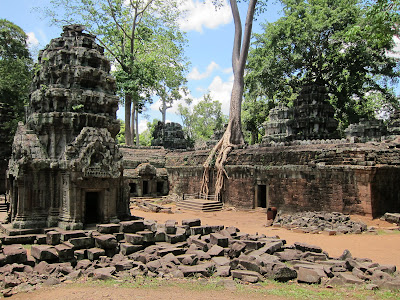We saw the best of Cambodia with the Angkor temples. We also saw the worst of the country: the former Security office 21 (S-21) in Phnom Penh where about 17.000 people were tortured and murdered during the bloody Khmer Rouge regime, from April 1975 until January 1979. The buildings in S-21 were formarly used for a primary school and an high school.
Those years changed fundamentally the country. Millions of urban people were sent to the countryside to live in condition close to slavery with forced labour. A couple of million have been suspected to be CIA/KGB agents and were killed by the regime. Their paranoia was so absurd that even their own followers - who sometimes were working in the prisons and carrying out the tortures – ended up as well in prison and tortured!
A lot of families have been destroyed. And the Khmer Rouge also tried to erase every sign of culture and arts in the country. Artists, intellectuals, teachers, monks, etc. were persecuted. The trial to judge former Kmer Rouge leaders is still in progress (the United Nations Assistance to the Khmer Rouge Trials, UNAKRT) whereas the head of the revolution, Pol Pot, died as a free man from mysterious natural causes in 1998.
Identity pictures of S-21 prisonners
Torture room
******
******
In the last decades Cambodia has known a renaissance of its craftsmanship. In Siem Reap, we visited a Cambodian mixed company called Artisans d'Angkor which promotes local producers of traditional crafts. The company organized high-skilled training for young rural population and established rural workshops. It has significantly helped to slow down rural depopulation in the region.
Stone carving workshop
Wood carving workshop
Silk farm
Silk farm
******
******
Traditional house
Another kind of traditional houses along an under construction highway
Grocery store along a national road
Hairdresser on the sidewalk of the capital
Stall in the street...
Petrol station
In the country we spent long hours on the road and were amazed by the local art of pilling the most diverse marchandise up on two-wheels, tractors and trucks.
And we checked, the pigs were alive!!


















































